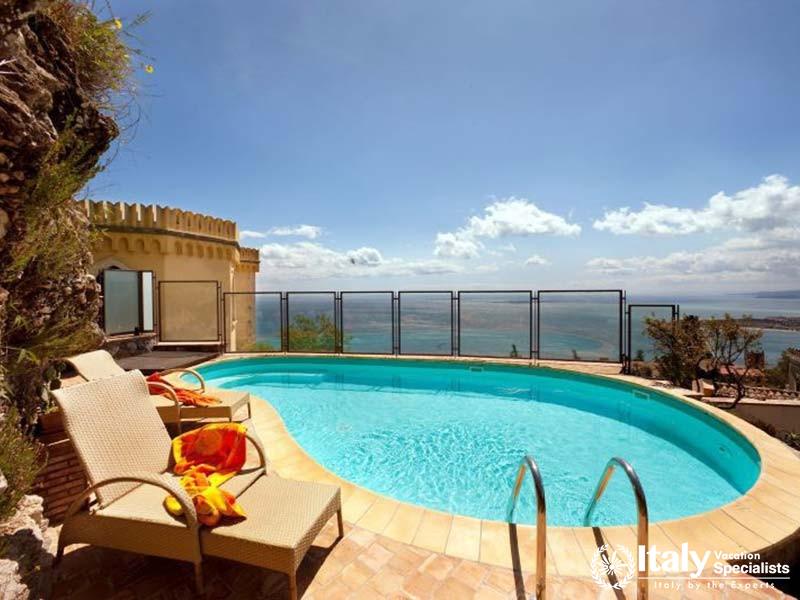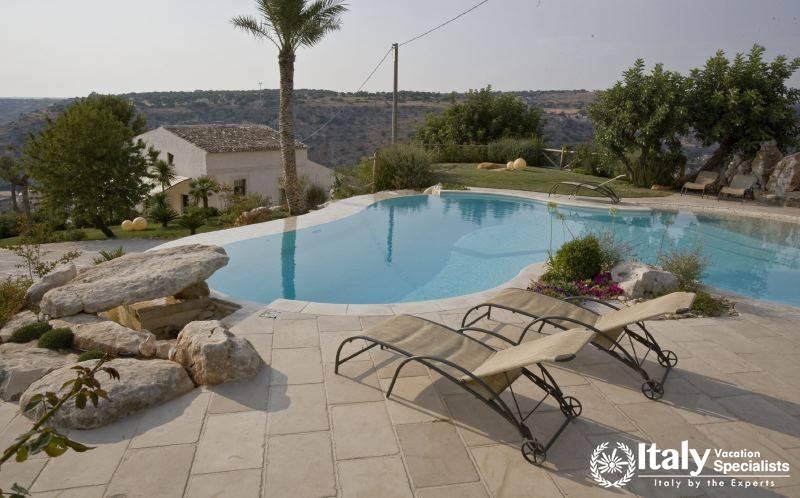Overview
Sciacca is one of the most visited of Sicily's southern towns, featuring roads in and out of the city that take one along a beautiful, much-indented stretch of coast with a number of beckoning beaches. The city is well-worn and the made the more interesting because amidst its modern jumble, cascading down the slopes of the hinterland, it reveals the influence of many overlapping cultures. The busy harbour at the city's feet adds its own distinct charms, and the fishermen who harbour here contribute mightily to the wonderful cuisine of the area.
Sciacca is is also the site of a number of thermal spas which have allegedly health-giving properties. Indeed, the very, very old city of Sciacca itself emerged out of these hot, fuming waters.
The ancient Greeks had already settled nearby Selinunte when, at some point between the 7th and 5th centuries BC, they discovered sulphurous hot springs and "sweat caves" on the slopes of Mount Kronio, also known as Mount Cologero, a short distance to the east. Some of them moved to the area to be closer to the springs or to serve the tourist trade of the day, but it wasn't until the Saracens settled the area in the 9th century AD that a proper town was organized. Walls were built, a grid of streets laid out, the harbor opened to trade.
Like virtually all other cities and towns of Sicily Sciacca bore the brunt of the brutal comings and goings of conflicting empires: Carthaginians, Romans, Byzantines, Romans, Spaniards, French and Austrians. It is these cultures, and the religions they practiced, whose cultural influences are palpably felt within the embrace of the modern city.
Over its long history Sciacca was destroyed and rebuilt many times. For all the efforts to fortify the city and render it impregnable, however, only short distances of the old walls, with its 5 gates, remain today. The gates themselves are better preserved and some are still in use. The most used is the western gate, Porta Palermo - through which runs the much-used highway to Palermo.
Sciacca became infamous throughout the Mediterranean world during the period from 1400 to 1529 AD as the result of a protracted and extremely bloody civil war that broke-out between two competing baronial families, the Perollo and Luna. During the struggles - referred to at the time as "the Case of Sciacca" - over half the population met their deaths. Things did not settle until Giacomo Perollo was killed by Sigismondo Luna in 1529. Perollo's body was savagely mutilated and dragged through the city at the end of a horse's tail - an act which raised such outrage that Luna had to flee to Rome where, haunted by the horror, he ultimately committed suicide by leaping into the Tiber.
Today's city is an architectural mixture mostly of modern and banal structures and a few gems in the centro historico - its historical center - that were built in medieval times. The remains of the very old and evocative Luna Castle sitting on the slopes that rise behind Sicacca looms over the city as a reminder of the bloody past. The Duomo, in Sciacca's ancient heart, was constructed in the late-Baroque style. The Palazzo Steripinto, from the late 15th and early 16th centuries, features diamond shape ashlars on its facade suggestive of similar architecture in other parts of Italy, such as the Palazzo dei Diamante in Ferrara.
Piazza Carmine, where one finds one of the original gates of the city, the Porta San Salvatore, is one of the main gathering places of Sciacca. The gate leads to Chiesa del Carmine, which is an 1817 neo-classical reconstruction of the original Norman Church built in the 13th century. The Piazza Scandaliato is even livelier - a good place to take in the passing scene while enjoying a robust cup of Sicilian espresso, or perhaps a lunch whose menu might consist of fish taken from local waters.
About 7 kilometers from the city to the east is Mount Calogero, named for a hermit who resided there in the thermal caves during the 6th century AD. The hermit was eventually sainted for his good works, and Saint Calogero is Sciacca's patron saint to this day. A grand Baroque-style basilica dedicated to Calogero was built near the site during the 16th century. As to the caves themselves, they are now part of the Grande Albergo delle Stufe - a hotel resort which offers a variety of spa treatments for those with real and alleged ailments. Not only that, the views across the surrounding landscape and across the southern Mediterranean might have even more salutary impacts.
Best time to visit Sciacca - shoulder seasons for sure. May, June, September or October - when the fierce heat of the Sicilian summer is abated.
Jesse Andrews, 2016
Gallery
Location
Private and Small Group Tours
Multi-Day Holidays Tours
Hotel
Villas
Apartment
Gallery

Our Multi-Day Holidays Tours
For Customized Holidays and Expert Advice, for travel in Italy and the Mediterranean,
get in touch with your travel agent or contact us via our
Trip Planning Questionnaire.
-
Direct In Italy: +39 375 823 5314
-
Toll Free: 1-866-779-2565


























